7 Fun Outdoor Activities for Toddlers
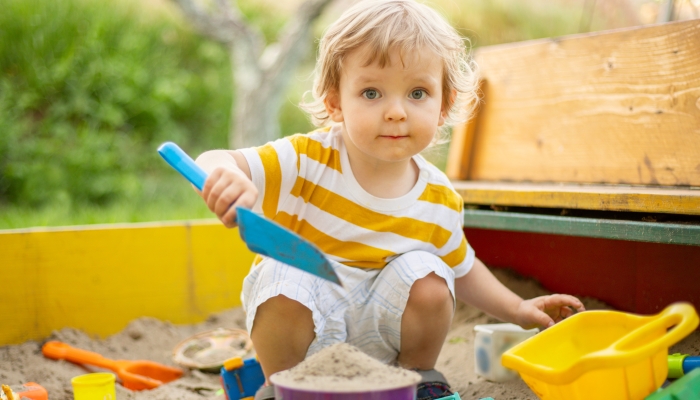
This post may contain affiliate links; please see our terms of use for details.
- Spending time outdoors has many benefits for you and your child.
- Little kids should spend at least a couple of hours outside each and every day.
- Unstructured outdoor play is limited in modern life, so try your best to include this in your daily routine.
Spending time outdoors has plenty of benefits for toddlers and parents alike. There’s nothing quite like heading out for an adventure with your toddler. Whether you’re heading out into the unknown or popping into your local wildflower garden, your toddler will love exploring the great outdoors.
Outside has new smells, sights, and sounds for your child to explore. Whether you prefer a quiet walk or a busy afternoon climbing trees and splashing in streams, you’ll make some core memories with your kid if you head out of the house.
Even time spent in your own backyard counts as outdoor play. If you have a yard filled with outdoor toys and interesting invitations to play, your toddler will love spending time outside. There are plenty of outdoor activities for toddlers to entertain your child when you’re exploring the natural world.
7 Outdoor Activities Toddlers Will Love
Take a look at these seven fun ideas for outdoor activities for toddlers:
1. Scavenger hunt
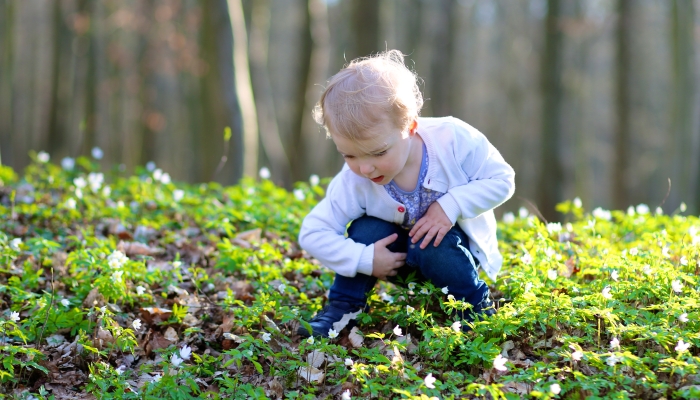
A scavenger hunt is a fantastic, toddler-approved way to spend time outdoors with your child while teaching them about nature and numbers. You’ll be working on their sensory motor skills while indulging in some sensory play. The best thing about an outdoor scavenger hunt is that it’s free, easy, and can be repeated time and time again without becoming boring. All you need to do is switch up the items you’re asking your child to find—for example, pine cones, twigs, and fallen feathers.
A great way to change this activity is to focus on seasonal items. For example, you might try searching for brown leaves in the autumn and green leaves in the summer. You can organize a scavenger hunt pretty much anywhere, so it’s a great activity for when your child starts moaning on a walk.
2. Tree climbing
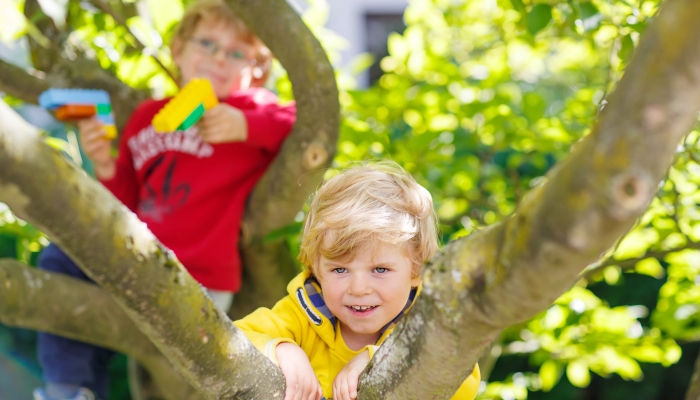
Tree climbing is a fun activity for building your toddler’s confidence, encouraging their gross motor skills, and having fun in nature. Start by choosing an easy to tree to climb, one that’s not too high, with nice thick branches. You’ll probably need to point out where your toddler can put their feet and hands in order to climb up. Tree climbing is a great way to teach problem-solving skills, independence, and risk negotiation skills.
Don’t encourage your child to climb too high; it’s important you can reach them safely to help them down if needed. If you’re not ready for tree climbing just yet, why not invest in some outdoor climbing toys for your backyard? Outdoor toys are a fantastic way to encourage gross motor activities.
3. Fort building
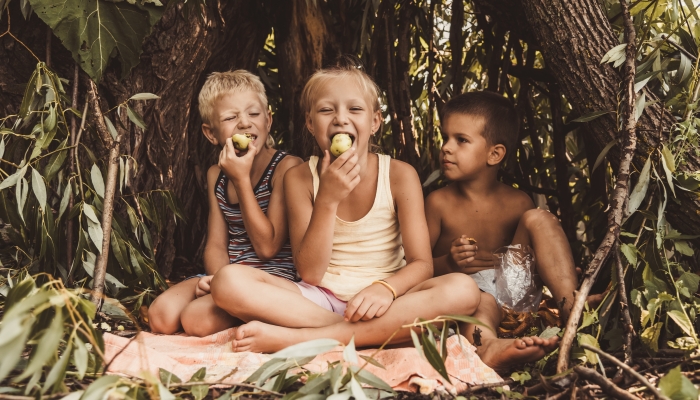
Children love building forts indoors. You’re probably used to walking into a room and finding your child hidden in a structure made from blankets and pillows. Building a fort outside is even better. You can find fun places to build your fort and get lost in an imaginative game.
You can use fallen branches and sticks to create a structure to sit inside. Though this can be time-consuming, you may stumble across a half-finished structure if you visit a wooded area frequented by families. Or you can take a tarp and attach it to trees to create a large waterproof den. This is especially great for facilitating outdoor play in bad weather.
4. Water painting
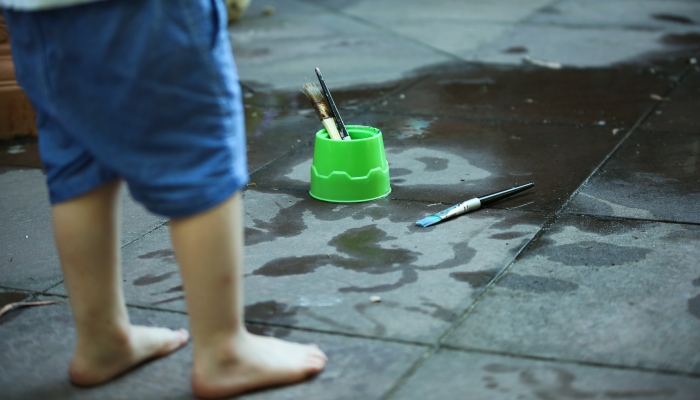
Water play is always a hit with children. Nature is the perfect canvas, and it’s a great way to encourage creativity in your child. When we imagine outdoor play, it’s easy to focus on physical activities, but creativity is just as crucial outdoors, and art ideas are a great way to pass the time.
Toddlers love exploring the textures, colors, and designs they can achieve while painting. Water painting is a clean painting activity that’s perfect for a hot day. All you need is a paintbrush, a small tub of water, a clean surface (this could be the side of your house, your driveway, or the fence), and a willing toddler. Give your toddler a paintbrush and let them indulge in some water play fun.
Alternatively, you could also fill a spray bottle with water, so your child can do some “spray painting.” Or, for a messier version of this game, use dirt and mud to paint the ground on a muddy walk. You could use a paintbrush or find a makeshift one out of a leafy branch.
5. Potion making
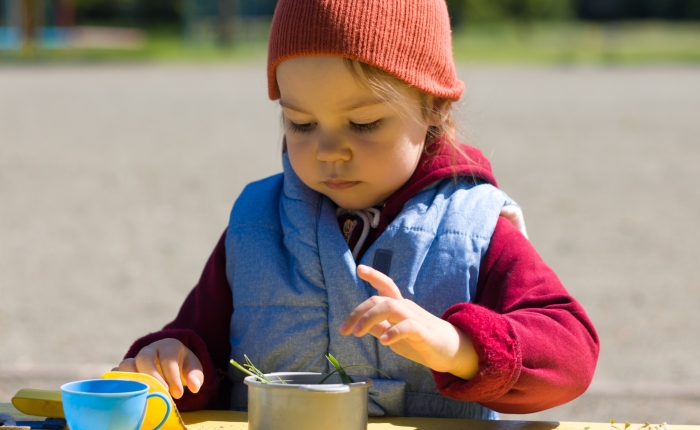
If your toddler likes roleplaying having magical powers, they will love potion-making in the great outdoors. You’ll need a magic potion container to create your concoction in (an empty ice cream tub will do, or a plastic cauldron if you have it) and a stick to stir it all together. Water will be your base; then, your toddler will need to find ingredients to add to make the spell work (for example, flowers and leaves). Don’t forget to say the magic words!
This is a great activity for when you need your toddler to walk that little bit further. You can pick ingredients along the route, distract your toddler with magical roleplay, and you’ll be home in no time.
6. Wildlife safari
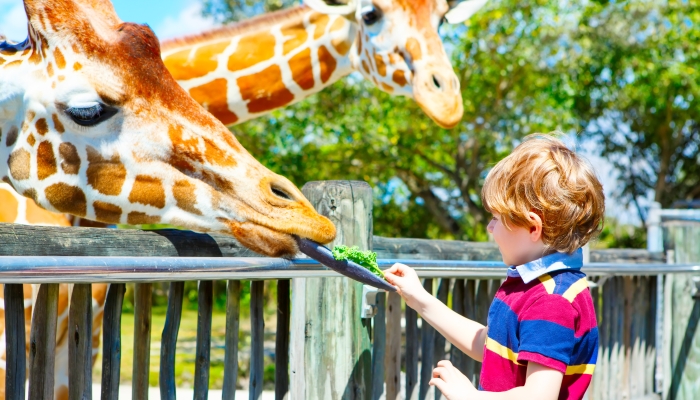
Toddlers love animals, and heading out to spot your local wildlife is a great way to spend time together outdoors. Whether you’re walking in the countryside in search of cows and sheep or peering into the flower beds at the local park to identify butterflies, your toddler will love seeing animals.
The more time our children spend immersed in nature, the more they will understand the importance of the natural spaces around us. If you want your children to grow up caring about wildlife, make sure you spend time together enjoying wildlife now.
This means not only looking for different species, but also creating spaces to encourage wildlife to thrive in your local area. You can make seed bombs to plant wildflowers that will affect pollinators, feed the local birds during the winter months, and build a bug hotel to encourage insects into your garden.
7. Chalk imaginative play
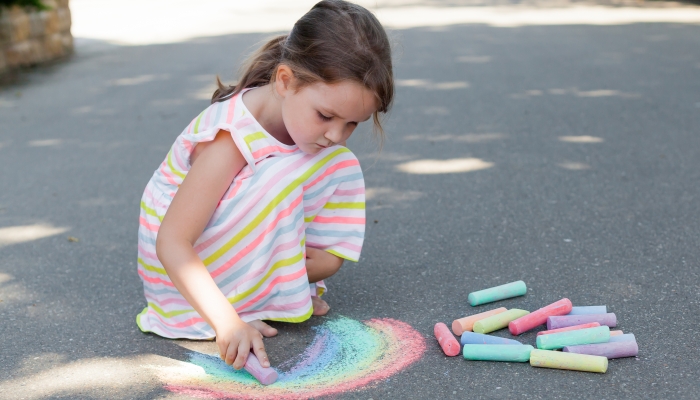
Sidewalk chalk is a great tool for outdoor activities for toddlers. Mark making is great for the development of fine motor skills, even if you’re using giant sidewalk chalk. Your toddler will love seeing the different colors and exploring different textures to draw on outdoors.
Imaginative play can add a whole new dimension of fun to outdoor chalking. Not only will your child be spending time outdoors, immersed in a creative activity, but they’ll also be honing their imaginative skills.
There are lots of ways you can use chalk to complement imaginative play. For example, you could use chalk to draw a road for your busy toddler to play with their toy dump trucks on. Or you could draw the moon so they can send a rocket to visit the moon. Or chalk out the outline of a house for their little people to live in.
How Much Time Should Toddlers Spend Outdoors?
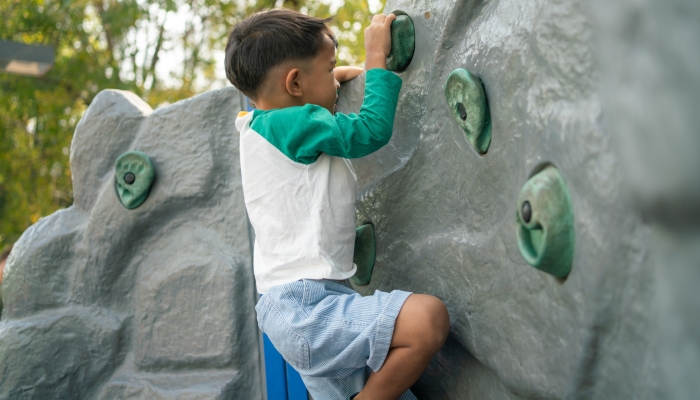
When it comes to young toddlers spending time outdoors, the more time they spend out there, the better. Sadly, many kids are spending hardly any time outside each day. With the increases in traffic, the loss of green space, the lure of screens, and parents juggling work and family commitments, many families struggle to spend time outdoors.
There are so many benefits to outdoor play; it’s vital to schedule some outdoor play each and every day. Yes, even in bad weather. Ideally, you should aim for your toddler to spend at least two hours outside every day. This will likely be easy in the summer months but perhaps more challenging in bad weather.
Why Are Outdoor Activities Important for Toddlers?
Spending time outdoors is good for the body, the mind, and the planet. The more we use our green spaces, the more likely we are to want to protect them. Spending time outside is great for your health, mood, and getting physical activity.
Associations between Nature Exposure and Health: A Review of the Evidence11. Jimenez, M. P., DeVille, N. V., Elliott, E. G., Schiff, J. E., Wilt, G. E., Hart, J. E., & James, P.. Associations between Nature Exposure and Health: A review of the evidence. International Journal of Environmental Research and Public Health. 2021;18(9), 4790. https://doi.org/10.3390/ijerph18094790, published in the International Journal of Environmental Research and Public Health in 2021, found evidence for “associations between exposure to nature and improved cognitive function, brain activity, blood pressure, mental health, physical activity, and sleep.”
It’s not just health that benefits; a study entitled Cross sectional associations of screen time and outdoor play with social skills in preschool children22. Hinkley, T., Brown, H., Carson, V., & Teychenne, M.. Cross sectional associations of screen time and outdoor play with social skills in preschool children. PLOS ONE. 2018;13(4). https://doi.org/10.1371/journal.pone.0193700, published in PlosOne, also found a positive link between time spent outdoors and social skills in preschoolers.
According to Beyond Physical Activity: The Importance of Play and Nature-Based Play Spaces for Children’s Health and Development33. Herrington, S., & Brussoni, M.. Beyond physical activity: The importance of play and nature-based play spaces for children’s Health and Development. Current Obesity Reports. 2015;4(4), 477–483. https://doi.org/10.1007/s13679-015-0179-2, published in Current Obesity Reports, “Active play involves physical activity that produces moderate to vigorous spurts of energy that can increase a child’s heart rate. The duration and intensity of active play change as children develop. Research indicates that children are more physically active when playing outdoors.”
How to Ensure Your Child’s Safety During Outdoor Activities
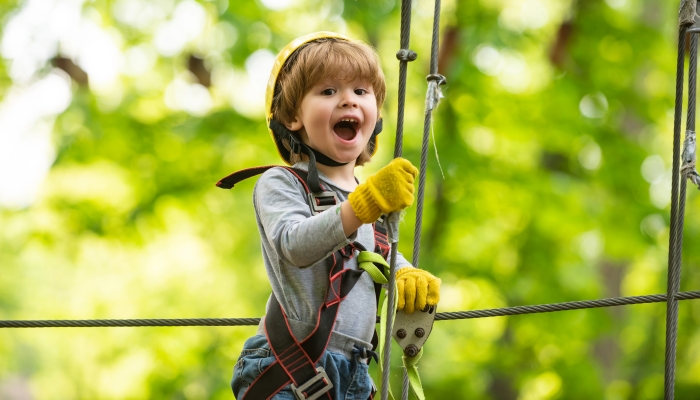
Spending time outdoors isn’t inherently dangerous. To ensure your child’s safety during outdoor activities for toddlers, you should stay close to your child. Keep them in sight so you always know where they are. If they’re climbing something, make sure you’re close enough to lend a hand if needed.
Bumps and scrapes are an inevitable part of physical play, but that’s as true inside as it is out. In fact, outdoor spaces tend to have fewer obstacles, so your child can explore more freely. If you’re worried about scraped knees, dress your toddler in long pants so their knees are covered to protect them from falls.
How to Encourage Toddlers to Engage in Outdoor Play
If the thought of taking a tantruming toddler to the woods fills you with dread, follow these easy tips for a stress-free adventure:
- Dress appropriately. If it’s cold, make sure your toddler is bundled up warmly. If it’s wet, dress them in waterproof clothes and boots. If it’s hot, take sunscreen, a sun hat, and a bottle of water. Make sure you’re both dressed appropriately for the weather so you can focus on having fun.
- Don’t forget the snacks. A hungry toddler is a grumpy toddler, so make sure you pack plenty of food and drinks for your adventure.
- Pick your moment. Start on a good weather day when your toddler is in a good mood. Don’t schedule the adventure for nap time; instead, pick your toddler’s happiest time of day for a happy toddler playtime.
- Model fun. If you hate being outdoors, your toddler will pick up on those vibes. Throw yourself into the experience and have fun.
References
- Jimenez, M. P., DeVille, N. V., Elliott, E. G., Schiff, J. E., Wilt, G. E., Hart, J. E., & James, P. (2021). Associations between Nature Exposure and Health: A review of the evidence. International Journal of Environmental Research and Public Health, 18(9), 4790. https://doi.org/10.3390/ijerph18094790
- Hinkley, T., Brown, H., Carson, V., & Teychenne, M. (2018). Cross sectional associations of screen time and outdoor play with social skills in preschool children. PLOS ONE, 13(4). https://doi.org/10.1371/journal.pone.0193700
- Herrington, S., & Brussoni, M. (2015). Beyond physical activity: The importance of play and nature-based play spaces for children’s Health and Development. Current Obesity Reports, 4(4), 477–483. https://doi.org/10.1007/s13679-015-0179-2
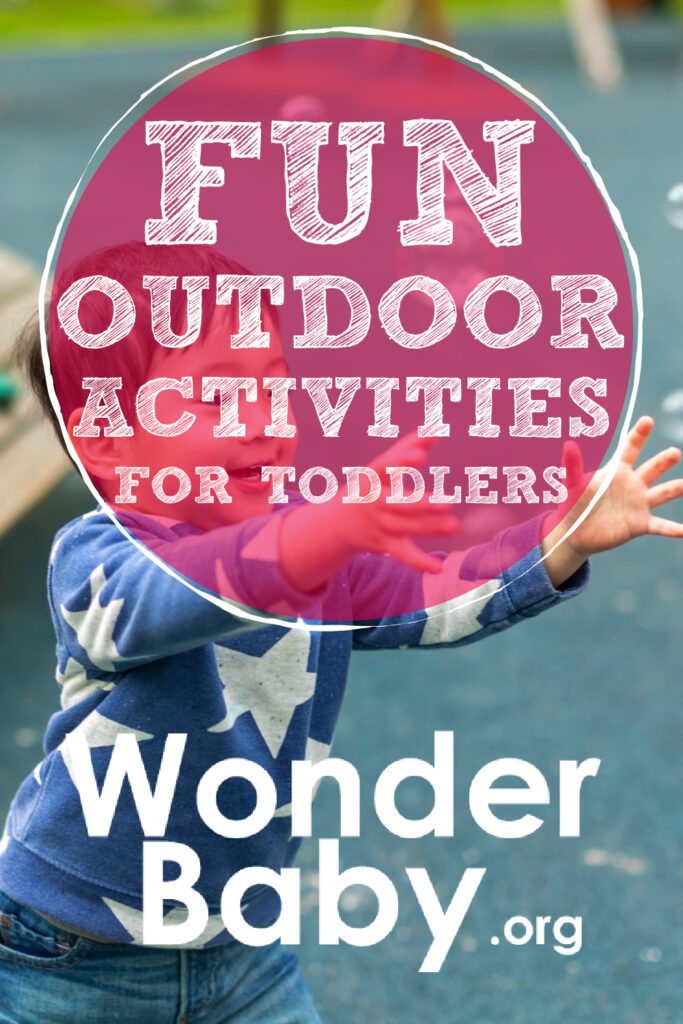
Related Posts

Braille and Literacy, Toys, Visual Impairment
24 Braille Toys for Kids Who are Blind
Everything from alphabet blocks to raised line coloring pages and activity books to puzzles to card and board games... and so much more! And it's all in braille ready for...

Holiday Crafts and Ideas
Should Parents Lie to Their Kids About Santa Claus?
Should parents lie about Santa? Find out how to balance trust, magic, and holiday traditions right here!
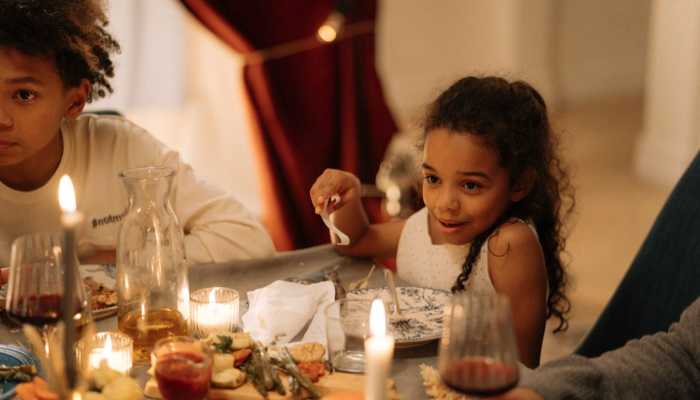
Holiday Crafts and Ideas, Special Needs
5 Tips for a Peaceful Thanksgiving with Your Child with Disabilities
Thanksgiving can be a joyful yet overwhelming holiday, especially for families with children who have sensory, motor, or dietary needs.